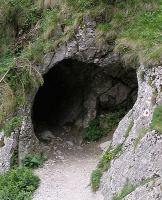 |
| 1754 map. Click to enlarge. |
Recently I came across an old Spanish map of Central America which included details of Nicaragua and Costa Rica, my suggested areas for Book of Mormon homelands. The map is from the King of Spain's library and is dated at 1574. It was published in the Boletín de la Sociedad Geográfica de Madrid in 1882. I found it online at http://www.maptak.com/cr/ant/ant-ca.html and accessed it on Mar. 13, 2012.
The map itself is very early and primitive, but does show the landmass as the early Spaniards apparently visualized it. Several things are noteworthy. First it shows the Rio San Juan, which flows from Lake Nicaragua to the sea, and separates Nicaragua from Costa Rica, as being a bay or inlet, rather than a river. Then it has Lake Managua connected to Lake Nicaragua rather than being separate as they currently are. Also, the mouth of the San Juan River is shown as a bay rather than as a delta which is its present configuration. Finally, the Isthmus of Rivas is very pronounced and is the only connection between Costa Rica and Nicaragua to the north.
 |
| 1736 Map by Herman Moll. Click to enlarge. |
Obviously this map is not very accurate compared to modern depictions of the area, however it may provide some clues that there have been geographical changes in the region since the times of the conquest. A more recent map drawn by cartographer Herman Moll in 1736 is quite different and probably more accurate than the 1574 sample. However, even this map shows a more definite connection between the two lakes, and a slight indentation for a bay at the mouth of the San Juan River.
What is the significance of these features which are illustrated on the 1574 map? If they are accurate, or even suggest a possible early existence of such differences, it would lend credence to my theory that this area was indeed the homeland of the Nephite civilization. The Isthmus of Rivas is very pronounced and the only route northward from the southern landmass to the land northward. The San Juan Valley may have hosted many more lakes, swamps, and wetlands, or even been an ocean imbayment as I have suggested previously. This would have effectively separate the regions. These wetlands would have been filled in with sedimentation from numerous eruptions from the volcanoes which line the area to the south. The geology of the region shows that such a process has taken place in the past.
